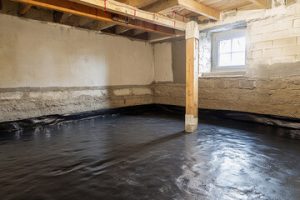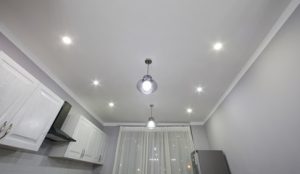Choosing the right Basement Remodeling Contractor is vital to a successful basement remodeling project. A reputable pro will be licensed and insured, have a detailed portfolio with pictures, make clear estimates that account for material costs and potential additional expenses, and offer warranties.
A good contract will also include a timeline and payment terms. A contingency fund should be included to address unexpected issues that may arise during the remodel.

Get Referrals
It’s a good idea to ask friends, family, and neighbors for recommendations of contractors they’ve worked with in the past. You can also find reviews online on websites such as Angie’s List.
When you’re interviewing potential basement remodeling contractors, be sure to ask about their experience with the type of project you have in mind for your home. For example, adding a bathroom to a basement is a great way to make the space more livable, but it has a number of design, plumbing, and code implications that a contractor should be familiar with.
It’s also important to find out how long a company has been in business, and to request a portfolio of their past work. A reputable contractor should have years of experience under their belt, and a portfolio that showcases a variety of projects, including basement remodels. Ask a contractor to send you a contract with the items that will be installed, costs, drawings and specifications, and starting and finishing dates. This will help avoid unexpected surprises. Also, ask if they offer financing for basement renovations.
Look at Their Portfolio
A reputable basement contractor should have plenty of examples of their work. Ask to see a gallery of finished projects, and pay attention to the details. A well-done basement can make your house feel more comfortable and welcoming – and add value.
You should also ask the contractors about their experience with basements, and how they worked with clients to ensure the project was done correctly and on time. They should be able to explain how their company handles issues like weather, material lead times, and other unforeseen challenges that can impact the timeline of a basement remodel.
Finally, make sure your contractor is licensed and insured before signing a contract. This step isn’t just about checking a box — it protects you from being ripped off by an unlicensed contractor who doesn’t follow local codes or safety regulations. A reputable contractor should be happy to provide you with proof of insurance and licensing. They may also offer a bond or a guarantee fund to cover costs should something go wrong during the remodel.
Get a Quote
Choosing the right contractor isn’t just about quality, it’s also about cost. A poorly executed basement remodel can cause costly moisture problems, code compliance issues, and more, so it’s essential that you hire a specialist who understands the unique challenges of this space.
Ask potential contractors for a portfolio of their past work and get some quotes from them. Be sure to compare prices and services, as a slightly higher quote may offer better value, such as a warranty or superior materials.
Ideally, you should choose local contractors. This will ensure that they’re familiar with your area’s building codes and permits, and are committed to ensuring the renovation adheres to all legal standards. In addition, you’ll be able to reach them more easily for questions and concerns during the project. A reputable local basement remodeling company should also be aware of any additional rules or regulations that may apply to your home (historic district, flood zone, etc). Ask about this before hiring someone. This will help you avoid any surprises down the line.
Ask Questions
Before hiring anyone, make sure you have a clear understanding of your vision for your finished basement. A contractor can’t deliver on your finished space if they don’t know what it is! Do you want a home theater, an office, or a guest suite? Each has different design, electrical, and plumbing implications that need to be considered.
It’s also important to ask how the contractor plans to communicate throughout the process. Miscommunication leads to frustration, especially during a renovation. Choose a contractor that makes communication a priority, from quick texts to weekly walk-throughs, and you’ll be less likely to experience hiccups during your renovation.
Finally, make sure the contractor you hire has both liability and workers’ comp insurance. Renovating your basement is going to mean having people in and out of your house, so you want to ensure they’re covered in the event of any damage or injuries.
Get a Contract
When you’ve narrowed down your list of contractors, make sure to get each one to sign a contract. This will outline the project scope, materials, payment schedule, timeline, and other key details. This is important to ensure transparency and protect yourself from any unexpected costs or issues.
Before you hire a contractor, make sure you’re crystal clear on what you want to accomplish with your basement remodel. This will help the contractor provide you with a accurate quote and build your finished space. For example, if you’re trying to turn your basement into a guest suite, home office, or entertainment zone, each will have different design, plumbing, and electrical implications.
You should also check to see that the contractor is licensed and insured. This will ensure that they’re following local building codes and are covered if something goes wrong during the renovation. It’s also a good idea to ask them about any additional regulations that might apply to your home (e.g., boiler rooms or laundry room framing). If they suggest skipping permits to save time or money, you should keep looking for a more reputable contractor.

